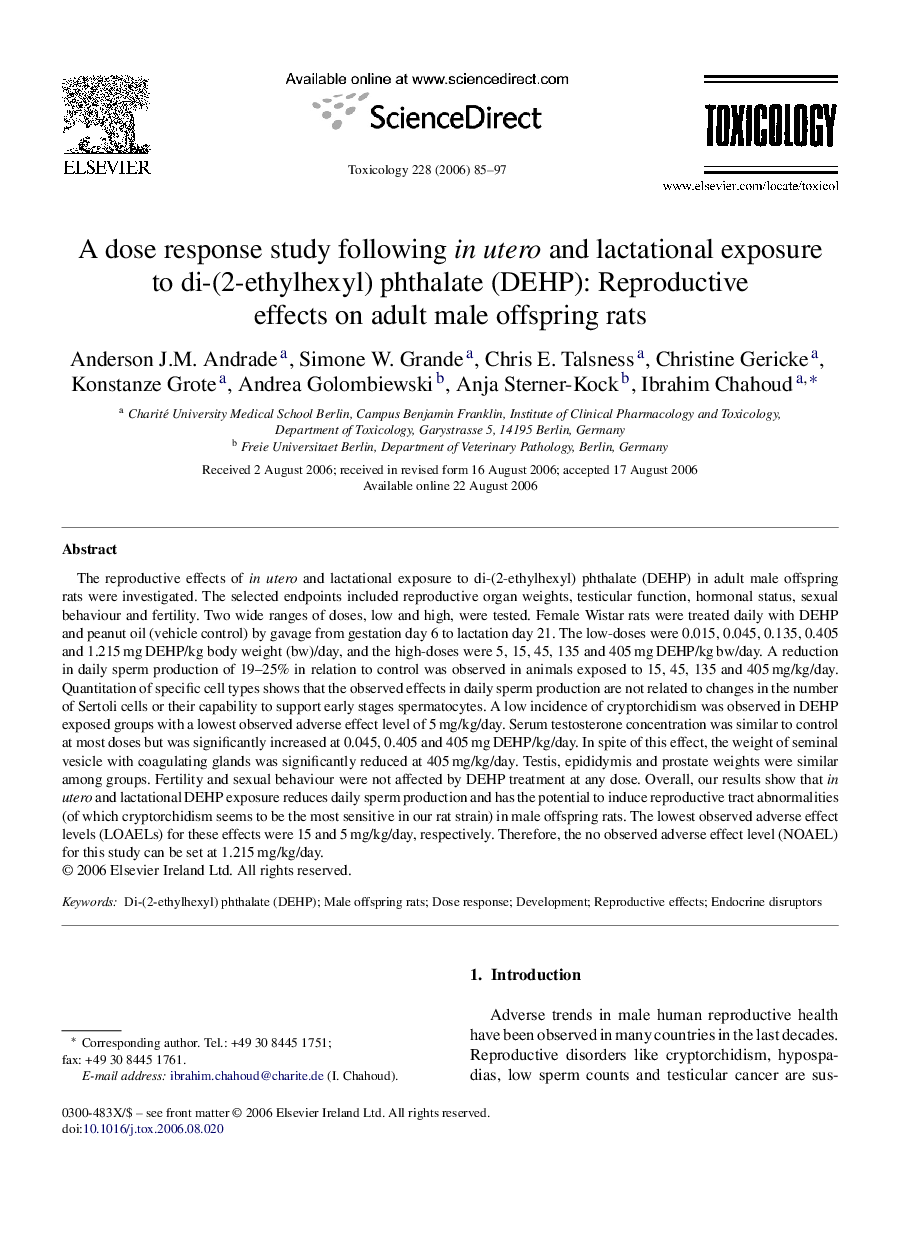| کد مقاله | کد نشریه | سال انتشار | مقاله انگلیسی | نسخه تمام متن |
|---|---|---|---|---|
| 2597689 | 1132595 | 2006 | 13 صفحه PDF | دانلود رایگان |

The reproductive effects of in utero and lactational exposure to di-(2-ethylhexyl) phthalate (DEHP) in adult male offspring rats were investigated. The selected endpoints included reproductive organ weights, testicular function, hormonal status, sexual behaviour and fertility. Two wide ranges of doses, low and high, were tested. Female Wistar rats were treated daily with DEHP and peanut oil (vehicle control) by gavage from gestation day 6 to lactation day 21. The low-doses were 0.015, 0.045, 0.135, 0.405 and 1.215 mg DEHP/kg body weight (bw)/day, and the high-doses were 5, 15, 45, 135 and 405 mg DEHP/kg bw/day. A reduction in daily sperm production of 19–25% in relation to control was observed in animals exposed to 15, 45, 135 and 405 mg/kg/day. Quantitation of specific cell types shows that the observed effects in daily sperm production are not related to changes in the number of Sertoli cells or their capability to support early stages spermatocytes. A low incidence of cryptorchidism was observed in DEHP exposed groups with a lowest observed adverse effect level of 5 mg/kg/day. Serum testosterone concentration was similar to control at most doses but was significantly increased at 0.045, 0.405 and 405 mg DEHP/kg/day. In spite of this effect, the weight of seminal vesicle with coagulating glands was significantly reduced at 405 mg/kg/day. Testis, epididymis and prostate weights were similar among groups. Fertility and sexual behaviour were not affected by DEHP treatment at any dose. Overall, our results show that in utero and lactational DEHP exposure reduces daily sperm production and has the potential to induce reproductive tract abnormalities (of which cryptorchidism seems to be the most sensitive in our rat strain) in male offspring rats. The lowest observed adverse effect levels (LOAELs) for these effects were 15 and 5 mg/kg/day, respectively. Therefore, the no observed adverse effect level (NOAEL) for this study can be set at 1.215 mg/kg/day.
Journal: Toxicology - Volume 228, Issue 1, 10 November 2006, Pages 85–97